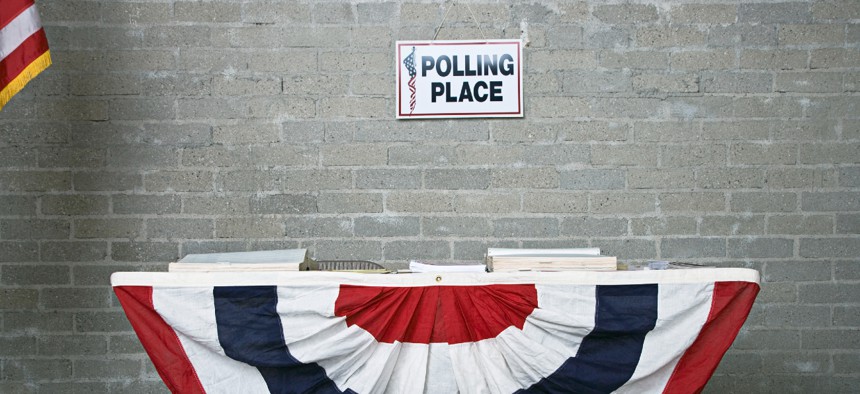
The executive order also aimed to improve federal websites that provide election information and modernize them. Jupiterimages/Getty Images
Want to Vote or Volunteer at the Polls on Election Day, But Not Sure What the Leave Policy Is? We Can Help
President Biden signed an executive order in March 2021 that outlines leave policies for voting in elections and serving as poll workers or observers.
In March, the Office of Personnel Management implemented President Biden’s Executive Order 14019, which aims to make it easier for federal workers to get to the polls and vote.
“Executive departments and agencies should partner with state, local, tribal, and territorial election officials to protect and promote the exercise of the right to vote, eliminate discrimination and other barriers to voting, and expand access to voter registration and accurate election information. It is our duty to ensure that registering to vote and the act of voting be made simple and easy for all those eligible to do so,” Biden said in a statement announcing the executive order in March 2021.
The president encouraged the heads of agencies to use social media, agency materials and websites to promote voter registration and participation to employees, including how to register to vote, vote by mail, and how to cast a ballot.
Biden also encouraged agencies to pass out voter registration and vote-by-mail applications, as well as provide access to state online systems for employees to learn more information.
Within 200 days of the executive order being signed, agency heads had to present a strategic plan to the assistant to the president for domestic policy outlining the ways in which the agency was promoting voter registration and voting.
The executive order also aimed to improve federal websites that provide election information and modernize them.
Early voting for the 2022 midterm elections are already underway in states and counties that permit it. Here’s how Executive Order 14019 can help federal workers get to the polls this election season.
Administrative Leave Policies:
- Agencies should allow employees to use up to four hours of administrative leave for voting in connection with each Federal general election day. The administrative leave may be used for voting on the Federal general election day or for early voting (i.e., voting prior to Federal general election day, as authorized by their jurisdiction).
- Agencies should allow employees to use up to four hours of administrative leave for voting in connection with each election event (including primaries and caucuses) at the federal, state, local (i.e., county and municipal), tribal, and territorial level that does not coincide with a federal general election day. (If an election simultaneously involves more than one level, it is considered to be a single election event.) This administrative leave may be used for voting on the established election day or for early voting, whichever option is used by the employee with respect to an election event.
- For federal special congressional elections not held on the date of a Federal general election, agencies should allow employees to use up to four hours of administrative leave for voting. This administrative leave may be granted for voting on the established date of a special election or for authorized early voting in connection with that election.
The allocated leave hours may be used for any travel time to and from the employee’s voting poll or station.
An employee may use administrative leave for voting in connection with each covered election event in which the employee participates by voting. However, an employee is limited to four hours of administrative leave for voting per election event.
In addition to those leave options, Executive Order 14019 allows federal employees up to four hours of administrative leave per leave year to serve as a nonpartisan poll worker or poll watcher at the federal, state, local (including county and municipal), tribal, or territorial level.
A “leave year” begins on the first day of the first pay period commencing on or after Jan. 1 of the given year and ends on the day before the first day of the next leave year. This leave is in addition to any administrative leave an employee uses to vote.
An employee may use up to four hours of administrative leave per leave year for the purpose of serving as a non-partisan poll worker or non-partisan observer, including training periods. If those duties require the employee to be absent for a longer period of time, the employee must use annual leave (accrued or advanced), earned compensatory time off, or credit hours earned under a flexible work schedule. An employee may also request leave without pay according to agency internal policies and any applicable collective bargaining agreement.
Scheduling of any administrative leave is subject to agency discretion. The agency will determine if the employee can be relieved of duty during the specific period of time requested by the employee without significantly impairing job duties or essential operations.
If an employee needs less than four hours to vote, only the needed amount of administrative leave should be granted.
Administrative leave for voting purposes may not be used on a non-work day or during overtime hours.






